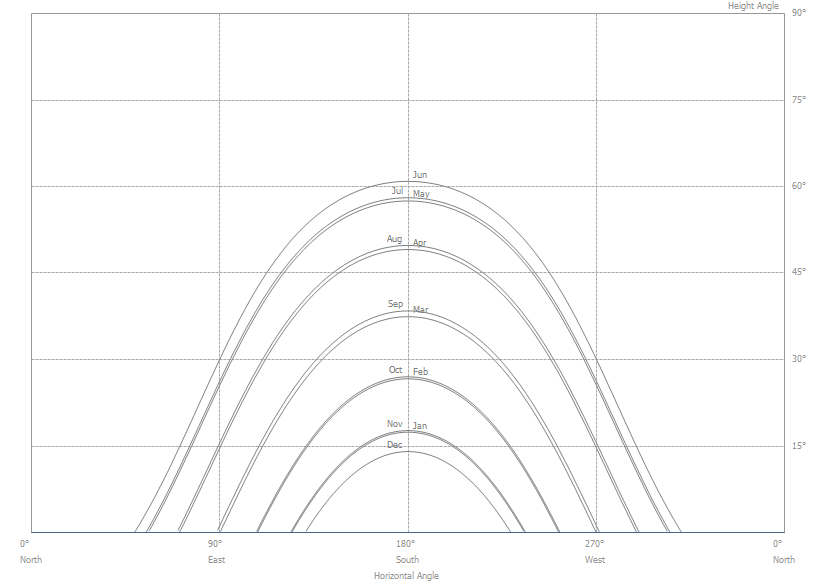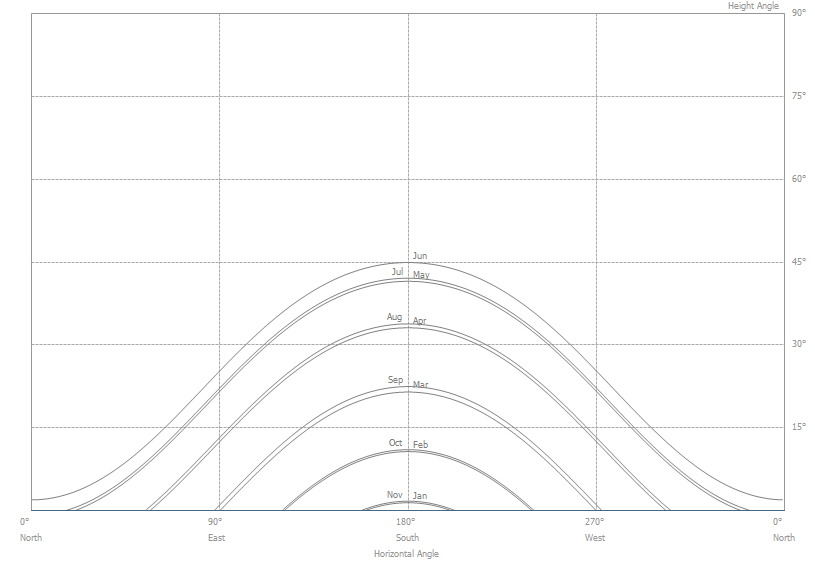Sun position
The position of the sun is calculated from the time $t$, the longitude and latitude and the time zone (according to the DIN 5034-2 or NREL SPA).
The position of the sun is described by two angles:
- The azimuth angle corresponds to the cardinal points:
- Northern Hemisphere: 180° is North, 270° East, 0° South, 90° West.
- Southern Hemisphere: 0° is North, 90° East, 180° South, 270° West.
- The elevation angle0° is on the horizon, 90° is the zenith.
Difference between azimuth and orientation: The orientation refers to the cardinal points regardless of latitude (northern/south hemisphere). 0° orientation means north all over the world. Azimuth, on the other hand, is defined in the northern hemisphere so that 0° is south – where the sun always reaches its peak. In the southern hemisphere, however, an azimuth of 0° means north.
Depending on the location, the course of the sun can vary greatly during the day and throughout the year.:


